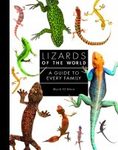Handbook / Manual Monograph
By: Tom Charlton(Author), Romulus Whitaker(Foreword By)
151 pages, 146 colour photos and 1 colour map
![King Cobra King Cobra]()
Click to have a closer look
About this book
Contents
Customer reviews
Related titles
About this book
The king cobra, the longest venomous snake in the world, is widely distributed across much of tropical and subtropical Asia. Its generic name Ophiophagus ('snake-eater') is indicative of its cannibalistic tendencies; its diet is comprised almost exclusively of snakes, including its own kind. The enormous lengths that the king cobra can reach, combined with an intimidating threat display and possession of highly neurotoxic venom, have led to it being greatly feared by many. It is widely considered as one of the most formidable snakes in the world.
However, whilst undoubtedly dangerous when provoked, the king cobra is undeserving of its fearsome reputation. Research has shown it to be an extremely shy and elusive reptile exhibiting fascinating behavioural traits, some of which are totally unique within the world of snakes. Even after more than 180 years since the king cobra was first described in 1836, many of its secrets are yet to be revealed. Importantly, monitoring of wild populations has shown signs of rapid decline in numbers in many areas, and so continued conservation efforts are required to secure the reign of the king cobra across its distribution.
King Cobra, profusely illustrated with excellent photographs from a number of very talented photographers, details the natural history of the king cobra, looking closely at all aspects of its life including distribution, diet, reproduction and venom, as well as its relationship with humans and conservation. The author also provides notes on the captive management of the king cobra, drawing on his experience of maintaining and breeding this species for a number of years.
Contents
Part One: The natural history of the King Cobra
The King Cobra
– Hamadryad – An early description
– The Elapids
– Description and colour variations
– Differentiating King Cobras from Asiatic true cobras and other Asian snakes
– Size and life span
– Questioning the validity of the famous record-sized king cobra
Distribution, habitat and climate
Population range
Habitat and climate
Behaviours and habits
Defensive behaviours
Diet and feeding
Reproduction
Relationship with humans
Status and conservation
Bites and venom
First aid for the bite from a King Cobra, Ophiophagus hannah
Venom delivery, composition and effects
Part Two: The King Cobra in captivity
Captivity
Wild-caught vs captive-bred
Handling
Handling equipment
Restraining
Housing and environment
Housing juveniles
Housing adults
Water and hydration
Heating and temperature
Lighting and photoperiod
Feeding
Snakes vs rodents
Converting a snake-eater to a rodent-feeder
Meal size and frequency
Feeding enrichment
Captive reproduction
Sexing
Environmental cycling
Pairing
Egg development, nesting and ovipositio
Incubation and egg management
Nest incubation
Hatchling care
Feeding hatchlings
Assist-feeding
Common health ailments
Quarantine
Rostral abrasions
Retained shed and eye-caps
Mites and ticks
Mouth rot
Respiratory infections
References
General index
Index to scientific names
Customer Reviews
Handbook / Manual Monograph
By: Tom Charlton(Author), Romulus Whitaker(Foreword By)
151 pages, 146 colour photos and 1 colour map






































